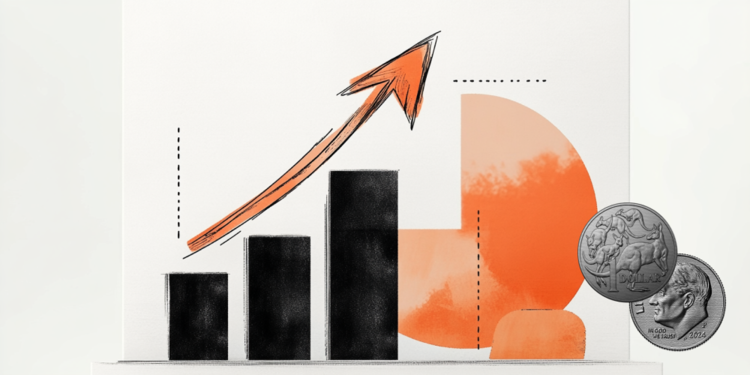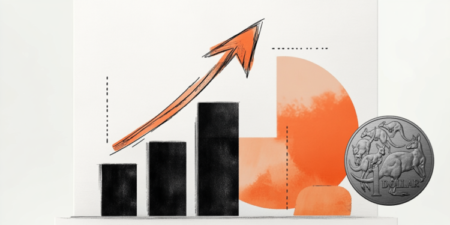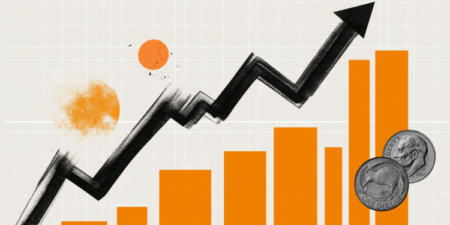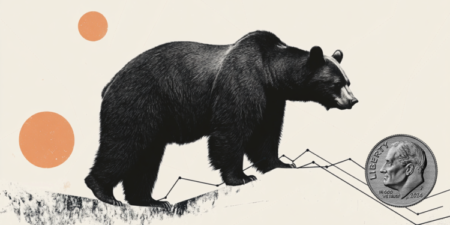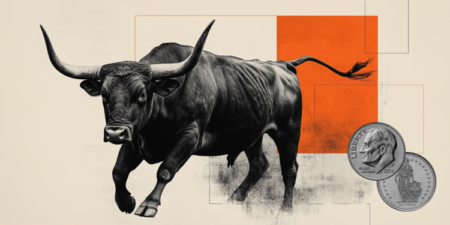- AUD/USD rebounds to around 0.6010 in Tuesday’s Asian session.
- Investors raise their bets the Fed will cut interest rates aggressively as Trump’s tariffs raise US recession fears.
- The RBA is anticipated to cut interest rates at their next meeting.
The AUD/USD pair recovers some lost ground to near 0.6015 during the early Asian session on Tuesday. The US Dollar (USD) edges higher against the Aussie amid concerns over a recession in the United States following US President Donald Trump’s sweeping tariffs on trading partners.
Analysts believe that the uncertainties surrounding the new Trump tariff policy will likely increase inflation and make a US recession more likely. Traders are stepping up bets the US Federal Reserve (Fed) will cut interest rates aggressively this year. According to the CME FedWatch tool, the markets have priced in a nearly 65% chance of a Fed cut in May, and futures now point to about 100 basis points (bps) worth of rate reductions by December.
On the Aussie front, the rising speculation that the Reserve Bank of Australia (RBA) could deliver faster and deeper rate cuts than previously expected could undermine the Australian Dollar (AUD) in the near term. The RBA will meet in May, and a 25 bps rate cut is likely, with a jumbo 50 bps reduction a slight possibility.
Meanwhile, China announced last Friday that it will impose 34% counter-tariffs on the US, taking effect Thursday, as part of a retaliatory reaction to Trump’s tariffs. The escalating trade war between the two largest economies in the world would damage the Australian economy and weigh on the AUD, as China is its biggest trading partner.
China announced last Friday that it will impose a 34% tax on all US imports, taking effect Thursday, as part of a retaliatory reaction to Trump’s tariffs. This marks Beijing’s toughest retaliation to the American leader’s trade war. The concerns over trade tensions between the world’s two biggest economies exert some selling pressure on the China proxy, as China is a major trading partner to Australia.
Australian Dollar FAQs
One of the most significant factors for the Australian Dollar (AUD) is the level of interest rates set by the Reserve Bank of Australia (RBA). Because Australia is a resource-rich country another key driver is the price of its biggest export, Iron Ore. The health of the Chinese economy, its largest trading partner, is a factor, as well as inflation in Australia, its growth rate and Trade Balance. Market sentiment – whether investors are taking on more risky assets (risk-on) or seeking safe-havens (risk-off) – is also a factor, with risk-on positive for AUD.
The Reserve Bank of Australia (RBA) influences the Australian Dollar (AUD) by setting the level of interest rates that Australian banks can lend to each other. This influences the level of interest rates in the economy as a whole. The main goal of the RBA is to maintain a stable inflation rate of 2-3% by adjusting interest rates up or down. Relatively high interest rates compared to other major central banks support the AUD, and the opposite for relatively low. The RBA can also use quantitative easing and tightening to influence credit conditions, with the former AUD-negative and the latter AUD-positive.
China is Australia’s largest trading partner so the health of the Chinese economy is a major influence on the value of the Australian Dollar (AUD). When the Chinese economy is doing well it purchases more raw materials, goods and services from Australia, lifting demand for the AUD, and pushing up its value. The opposite is the case when the Chinese economy is not growing as fast as expected. Positive or negative surprises in Chinese growth data, therefore, often have a direct impact on the Australian Dollar and its pairs.
Iron Ore is Australia’s largest export, accounting for $118 billion a year according to data from 2021, with China as its primary destination. The price of Iron Ore, therefore, can be a driver of the Australian Dollar. Generally, if the price of Iron Ore rises, AUD also goes up, as aggregate demand for the currency increases. The opposite is the case if the price of Iron Ore falls. Higher Iron Ore prices also tend to result in a greater likelihood of a positive Trade Balance for Australia, which is also positive of the AUD.
The Trade Balance, which is the difference between what a country earns from its exports versus what it pays for its imports, is another factor that can influence the value of the Australian Dollar. If Australia produces highly sought after exports, then its currency will gain in value purely from the surplus demand created from foreign buyers seeking to purchase its exports versus what it spends to purchase imports. Therefore, a positive net Trade Balance strengthens the AUD, with the opposite effect if the Trade Balance is negative.
Read the full article here







